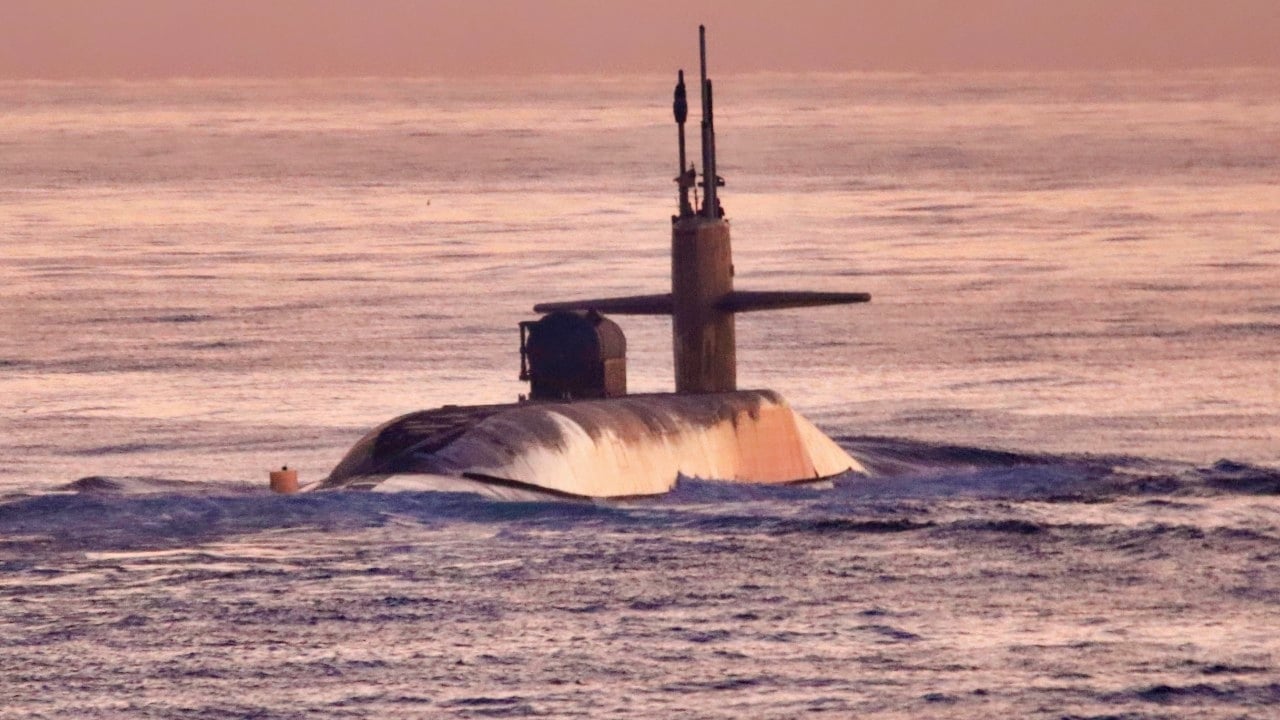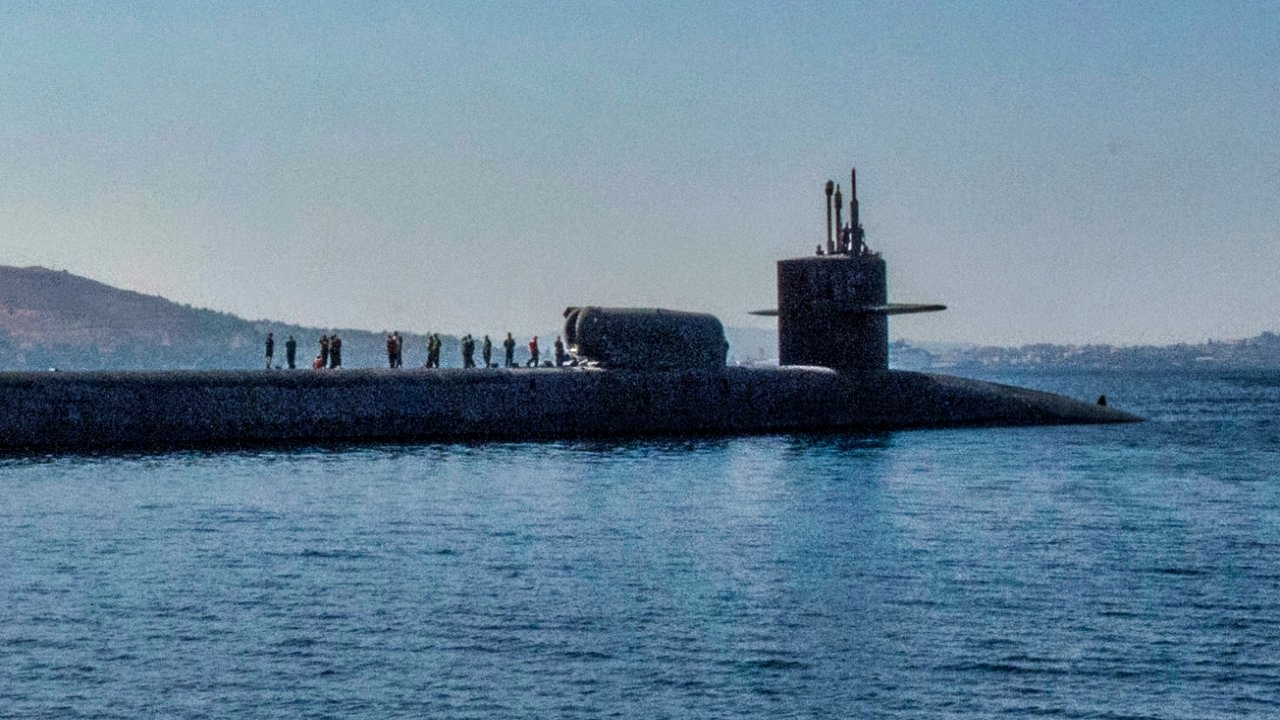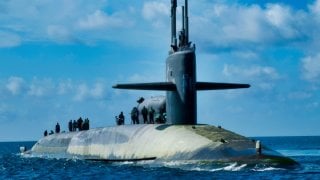The Navy's Ohio-Class SSGN Submarines: 'Cruise Missile Trucks' Headed for Retirement?
The U.S. Navy's four conventionally-armed Ohio-class submarines (SSGNs), converted from ballistic missile carriers, are nearing the end of their service lives. These vessels, with a total of 154 Tomahawk Land Attack Missiles each, play a key role in the Navy's vertical launch payload capacity.
What You Need to Know: The U.S. Navy's four conventionally-armed Ohio-class submarines (SSGNs), converted from ballistic missile carriers, are nearing the end of their service lives. These vessels, with a total of 154 Tomahawk Land Attack Missiles each, play a key role in the Navy's vertical launch payload capacity.

-However, with USS Ohio and USS Florida set to retire in 2026, the Navy faces a significant shortfall.
-The Virginia-class submarines with the Virginia Payload Module (VPM) were meant to fill the gap, but delays in production have created a looming firepower deficit, while the Columbia-class ballistic missile submarines also face delays.
Ohio-Class Submarines: The U.S. Navy's Powerhouse Reaching Retirement
A total of 18 of a planned 24 Ohio- class nuclear-powered ballistic missile submarines (SSBNs) were built for the United States Navy between 1976 and 1997 – and the lead boat, USS Ohio entered service in November 1981. Yet she isn't actually a ballistic missile sub, rather USS Ohio is one of four of the class that were converted to conventionally-armed nuclear-powered (SSGNs) submarines.
Per the Strategic Arms Reduction Treaty (START II), which was agreed in June 1992, the number of U.S. Navy strategic missile submarines was limited to 14 beginning in 2002. The decision was made to convert the four oldest boats of the class.
Still Powerful Vessels
It would be unfair to suggest that the four boats were neutered or even had their proverbial claws clipped. Though no longer part of the U.S. military's nuclear triad, the boats were well-armed vessels.
During the conversion process, the four SSBNS had their 24 missile tubes that held Trident Submarine Launched Ballistic Missiles (SLBM) removed and replaced with 22 missile tubes that could hold seven Tomahawk Land Attack Missiles (TLAM) each, for a total of 154 missiles.
In addition, the converted submarines were also given the space and necessary changes to host up to 66 Special Forces (SOF) personnel and two missile tubes modified to lockout-out chambers for Dry Deck Shelter (DDS), NavalNews.com explained. The conversion also resulted in these vessels trading their SLBM control related facilities for the Common Submarine Radio Room (CSRR) and two High-Data-Rate antennas. That greatly expanded the communication capabilities of the vessels and each was essentially equipped with the necessary systems to act as a forward-deployed Small Combatant Joint Command Center for the Special Forces onboard.

USS Ohio began the conversion in November 2002 and rejoined the fleet in January 2006 as SSGN-726, following her sea trials. The other converted boats of the class included USS Michigan (SSGN-727), USS Florida (SSGN-728), and USS Georgia (SSGN-729).
Brandon J. Weichert wrote for The National Interest, "(The Ohio-class SSGN) submarine is an undersea juggernaut, brimming with a vast and lethal arsenal and one of the world’s most sophisticated undersea communications suites, the Ohio-class will be one of the most important weapons systems the US Navy can deploy against the Chinese military in war."
Retirement Looming for Ohio-Class
Given that the four boats have been in service for four decades or longer, they're reaching the end of their respective service lives. Though it has been long anticipated, it is now just two years away, with SSGN-726 and SSGN-728 joining 17 other ships planned for retirement in 2026; while SSGN-727 and SSGN-728 will be retired two years later.
The concern for military planners is that the four SSGNs currently make up nearly half of the vertical launch payload capacity of the U.S. Navy's Submarine Force – and the sea service will face an immediate decline in payload capacity once the first two boats are retired. The Block V Virginia -class submarines – which will be equipped with the 84-foot-long " Virginia Payload Module" (VPM) that holds four large diameter vertical launch tubes – were meant to take over the role of the four Ohio-class boats.
The vertical launch tubes of the VPM were meant to fill the role of the "Multiple All-Up-Round Canister" tubes on the Ohio SSGNs with each able to hold seven Tomahawk missiles, for a total of 28 additional missiles on each boat. The issue is that the U.S. Navy needs 22 of the VPM-equipped subs to regain the lost payload capacity of the four boats.
Delays caused by the pandemic and a struggling submarine industrial base to keep pace have only resulted in delays. At the same time, the future Columbia -class ballistic missile submarines that will replace the aging Ohio-class are also running behind schedule. The Columbia-class remains a number one priority as it is a key component of the nuclear triad, and that will result in a lost payload capacity for the U.S. Navy's Submarine Force in the short term.
Author Experience and Expertise: Peter Suciu
Peter Suciu is a Michigan-based writer. He has contributed to more than four dozen magazines, newspapers, and websites with over 3,200 published pieces over a twenty-year career in journalism. He regularly writes about military hardware, firearms history, cybersecurity, politics, and international affairs. Peter is also a Contributing Writer for Forbes and Clearance Jobs. You can follow him on Twitter: @PeterSuciu.
You can email the author: [email protected].
All images are Creative Commons and/or Shutterstock.


